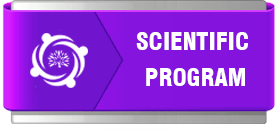
Steven A. Tedesco
Atoka Inc., USA
Title: Application of surface geochemical survey with aeromagnetic, subsurface geology and seismic data in exploration for conventional reservoirs
Biography
Biography: Steven A. Tedesco
Abstract
Surface geochemistry is an integral part in finding petroleum reservoirs when used in conjunction with subsurface and seismic data. Surface geochemical methods presented here are micro-magnetics, iodine and soil gas results that detailed regional and specific areas for further exploration and delineation by subsurface and seismic tools. The use of surface geochemical methods is based on the concept that vertically migrating hydrocarbons migrate from a reservoir to the surface along micro-pores, micro-fractures and micro-unconformities. The petroleum fluids migrate as the result of simple physics whereby they move toward an area of ever decreasing pressure. The petroleum compounds eventually enter the soil substrate and react with existing oxides, carbonates, metals, plants, bacteria, water and clays. They can cause changes in Eh, pH, deposition of or removal of radioactive, halogen and carbonate minerals. Petroleum compounds, such as methane and ethane will escape into the atmosphere. One of the pressing questions for an explorationist is whether a target defined by subsurface geology, 3D or 2D seismic contains hydrocarbons. The presence or absence of a surface geochemical anomaly determines if exploration should stop or move forward. The lack of a surface geochemical anomaly, as defined by actual drilling case histories, there is a 95% chance it will result in a dry hole, marginal or uneconomic well. The presence of a surface geochemical anomaly, strong or weak, definitive or chaotic in shape, does not predict a productive discovery. Based on published articles from last 80 years the use of surface geochemistry can increase drilling success from 10% to 60%. Surface geochemistry has proven to be a very successful exploration tool when integrated with subsurface and seismic methods. These methods can be used to find conventional reservoirs in any basins in the world such as the Assam, Krishna Godavari and Cauvery basins in India. The Assam Basin which has several producing structures related to a wrench fault system. Several structures are not productive. The basin would benefit from surface geochemistry in that it could screen areas to determine if there is hydrocarbons present or not prior to shooting 3D seismic and drilling. A similar situation can be found in identifying productive stratigraphic areas in the deltaic system in the Krishina-Godavari Basin. Presented here will be onshore case histories utilizing surface geochemistry with seismic and subsurface geology from the Denver, Williston, Cherokee and Forest City basins, USA; Michigan basin, Canada and the Zuunbayan and Unegt basins, China.

